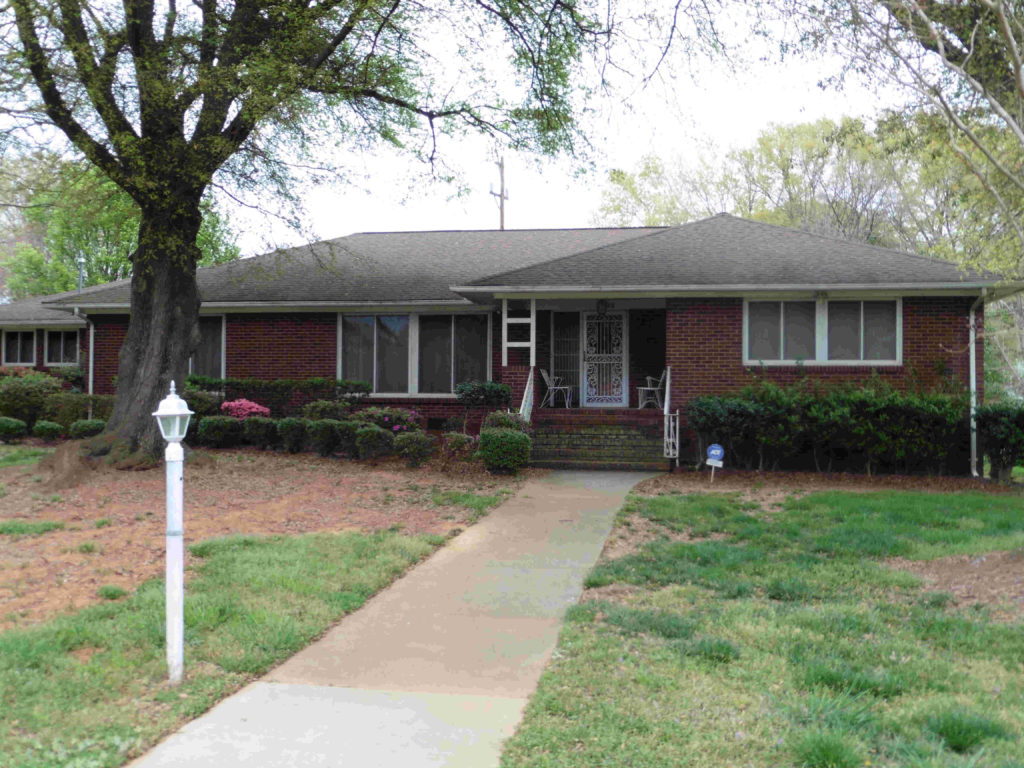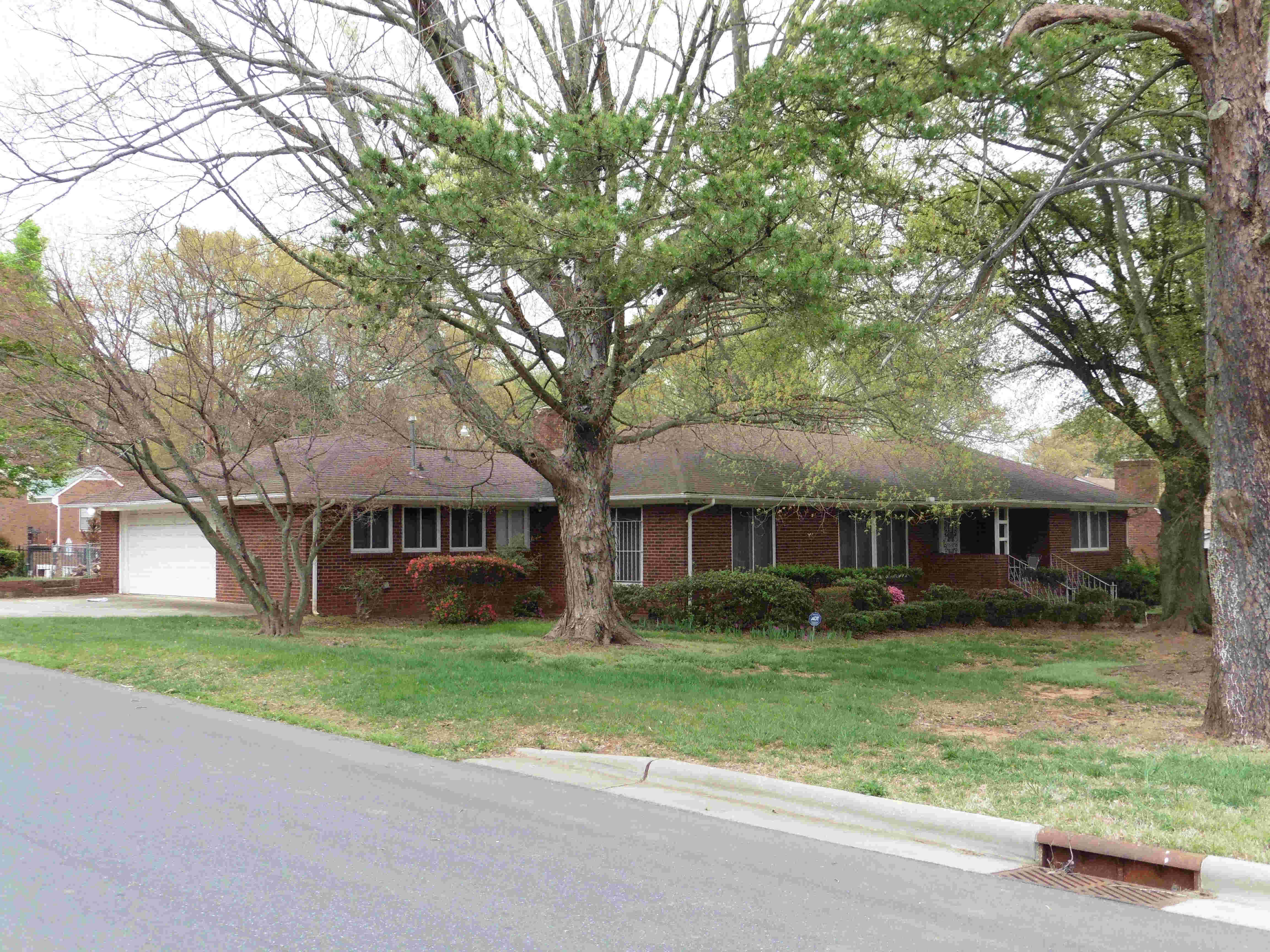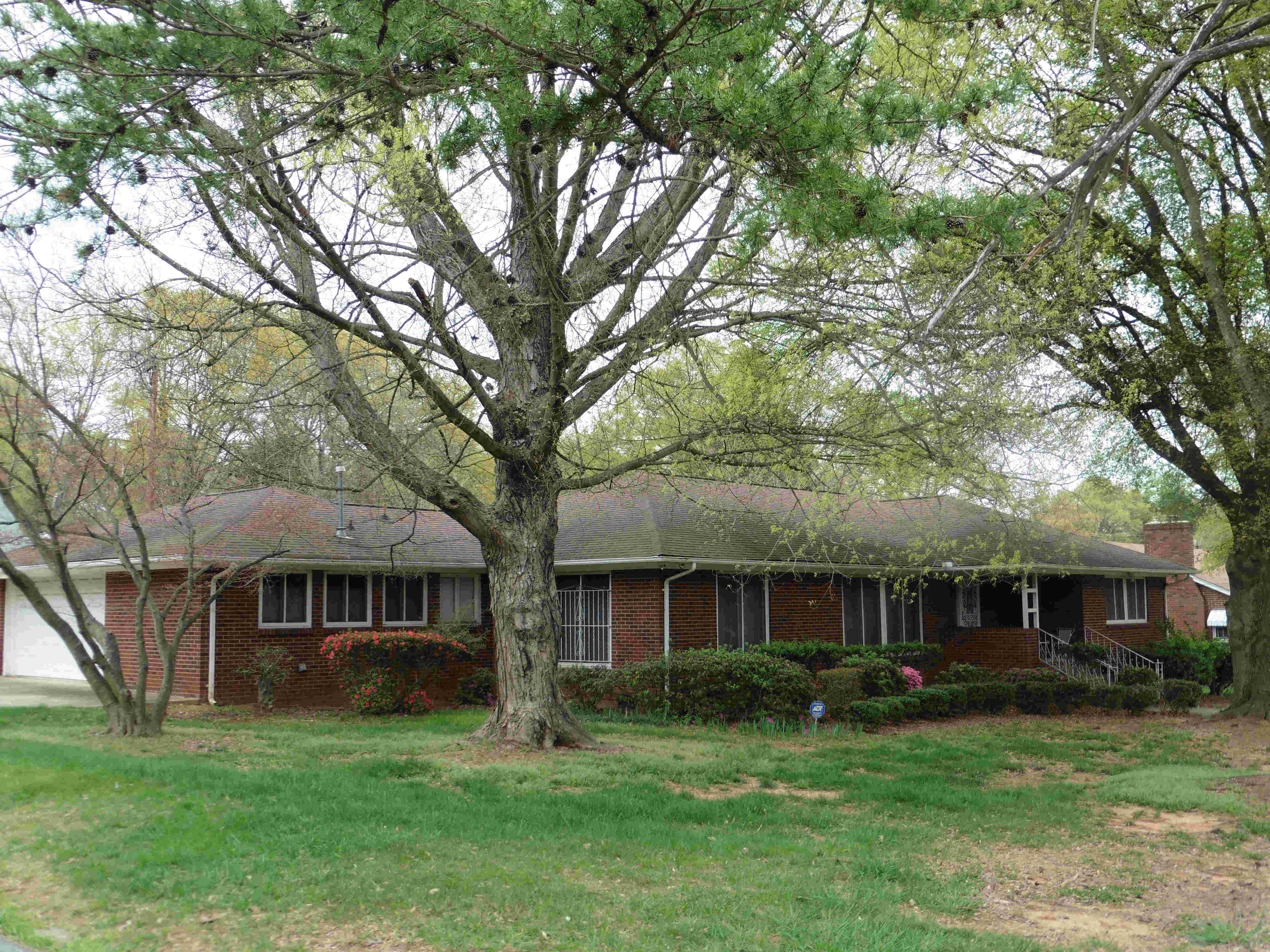1722 Patton Avenue
 Built in 1960 as the retirement residence of Bishop Walter W. Slade & Sallie Mae. In a neighborhood with many ministers, Rev. Walter Slade was one of the most distinguished. He served as a Bishop in the A.M.E. Zion Church from 1944 to 1960, part of the 12-person governing body of this nation-wide denomination. His wife Sallie Mae was a Supervisor of Missionary Work in the denomination.
Built in 1960 as the retirement residence of Bishop Walter W. Slade & Sallie Mae. In a neighborhood with many ministers, Rev. Walter Slade was one of the most distinguished. He served as a Bishop in the A.M.E. Zion Church from 1944 to 1960, part of the 12-person governing body of this nation-wide denomination. His wife Sallie Mae was a Supervisor of Missionary Work in the denomination.
A later resident here was Ernest L. James, Jr., who headed Logan School in Concord, North Carolina, as its Principal for twenty-two years.
******
Walter William Slade (7.4.1875 – 5.19.1963) ranked among the top leaders in the African Methodist Episcopal Zion Church, serving as Bishop from 1944 to 1960.
He followed in the footsteps of his father Rev. Mayfield Slade, an A.M.E. Zion minister who helped spread the religion in western North Carolina. Born just north of Charlotte in Newton, N.C., young Walter received the license to preach in 1895. By 1901 he graduated from Livingstone College, the A.M.E. Zion denomination’s ministerial training college in Salisbury, N.C.
He first pastored a circuit of churches in rural Tennessee, then worked to start new congregations in North Carolina. “Twelve churches built and bought by Rev. W.W. Slade … an extraordinary and creative young preacher,” marveled A.M.E. Zion historian William Walls. The leadership moved him to Wesley Center A.M.E. Zion Church in Pittsburgh in 1932. It was the midst of the Great Depression and the church teetered on the brink of financial collapse. Slade put it back on firm footing. National leaders took notice and in 1940 the denomination made him its Financial Secretary. Wrote a biographer in the Encyclopedia of African American Religions, “Slade compiled a record unmatched by any person in that office, paying off longstanding debts from the Depression.”
In 1944 he became the 50th A.M.E. Zion Bishop. As Bishop, Slade helped local ministers manage churches across the Carolinas. “He took a special interest in nurturing Clinton Junior College, the denominational school in Rock Hill, South Carolina,” the Encyclopedia of African American Religions noted. The Slade-Moreland building there was named to honor his efforts and those of longtime school president Dr. Sallie V. Moreland (sister of McCrorey Heights residents Clarence, Howard and George Moreland).
Slade’s connection to Charlotte came in part through the church; Charlotte was an A.M.E. Zion stronghold, site of the denomination’s Publishing House. But his love for the city also owed much to his wife Sallie Mae (1.13.1892 – 6.25.1975) who had lived in Charlotte as a young woman. After Bishop Slade’s first wife died, he married Sallie Mae Watson Blake in 1931. Each already had children and together they had one more — a total of eight including W.W. Slade, Jr. As the Bishop’s wife, Mrs. Slade became a Supervisor of Missionary Work in the denomination.
This house, built just as Rev. Slade retired, represented a capstone of the couple’s long and successful career. Located on a prominent corner lot and shaded by now-massive oak trees, it was one of the largest in the neighborhood. The original permits for the dwelling in 1960 show that it had three bathrooms, a rarity in any neighborhood in that era.
Bishop Slade lived here barely three years when he passed away. The Pittsburgh Courier, one of the foremost national newspapers of black America, devoted a lengthy story to “this patriarch of the church.” Not just a strong administrator, he remained “a popular preacher in revivals,” the Courier reported, “one of the denomination’s great evangelists.”
A later longtime occupant was Ernest L. James, Jr. (7.13-1903 – 12.12.1999), along with wife Ernestine S. James. Mr. James was a teacher and school administrator. Much of his career centered in Concord, N.C., an hour east of Charlotte. He headed Logan School for twenty-two years, which honored him by naming part its campus James Auditorium. He also served in lay leadership roles at Westminster Presbyterian Church there, and chaired the Library Commission as local government desegregated. Late in his career Charlotte Mecklenburg Schools evidently recruited him to Charlotte. A city directory consulted at random, for 1981, listed him as “Instructional Coordinator, Multi-Media.”


Architecture
Ranch. Red brick, one story, with main hip roof, a projecting front wing that holds the recessed entrance porch, and a projecting side wing that holds the garage (not a carport, as was common elsewhere in this neighborhood).
Building permits
Patton-1722-permit
Date issued: June 7, 1960
Owner: Bishop Slade
Contractor: City Plumbing. Co.
Other permit info: Probably for original construction of house. Includes 3 water closets.
Building permit files, Robinson-Spangler Carolina Room, Charlotte Mecklenburg Library.
First appeared in city directory
1961 – Rev. Walter W. Slade & S. Mae.
He: Bishop, AME Zion Church. She: No occupation listed.
1981 – Ernest L. James, Jr. & Ernestine S.
He: Instructional Coordinator, Multi-Media
City directory collection, Robinson-Spangler Carolina Room, Charlotte Mecklenburg Library.
obituary
James_Ernest_Sr, funeral program in the History Room, First United Presbyterian Church, Charlotte.
Moreland, Clarence, Funeral program in the Digital Smith Collection, Inez Moore Park Archives, Duke Library, Johnson C. Smith University.
Resources
“AME Zion Bishop W. W. Slade Dies,” Pittsburgh Courier, June 1, 1963. On-line at: https://www.newspapers.com/newspage/40836477/
Copeland, Elaine Johnson, and Cheryl J. McCullough, Clinton Junior College (Arcadia Publishing, 2004), p. 112.
Larry G. Murphy, J. Gordon Melton, Gary L. Ward, editors, Encyclopedia of African American Religions (Garland Publishing, 1993), p. 701.
“Our History: Wesley Center AME Zion Church,” on-line at wcamez.org/our-history/
“Sallie Mae Watson Slade,” Find a Grave website, on-line at: http://www.findagrave.com/cgi-bin/fg.cgi?page=gr&GRid=150174479
Walls, William J., The African Methodist Episcopal Zion Church: Reality of the Black Church (A.M.E. Zion Publishing House, 1974), pp. 119, 205 – 06, 281, 423, 446 – 47, 604.